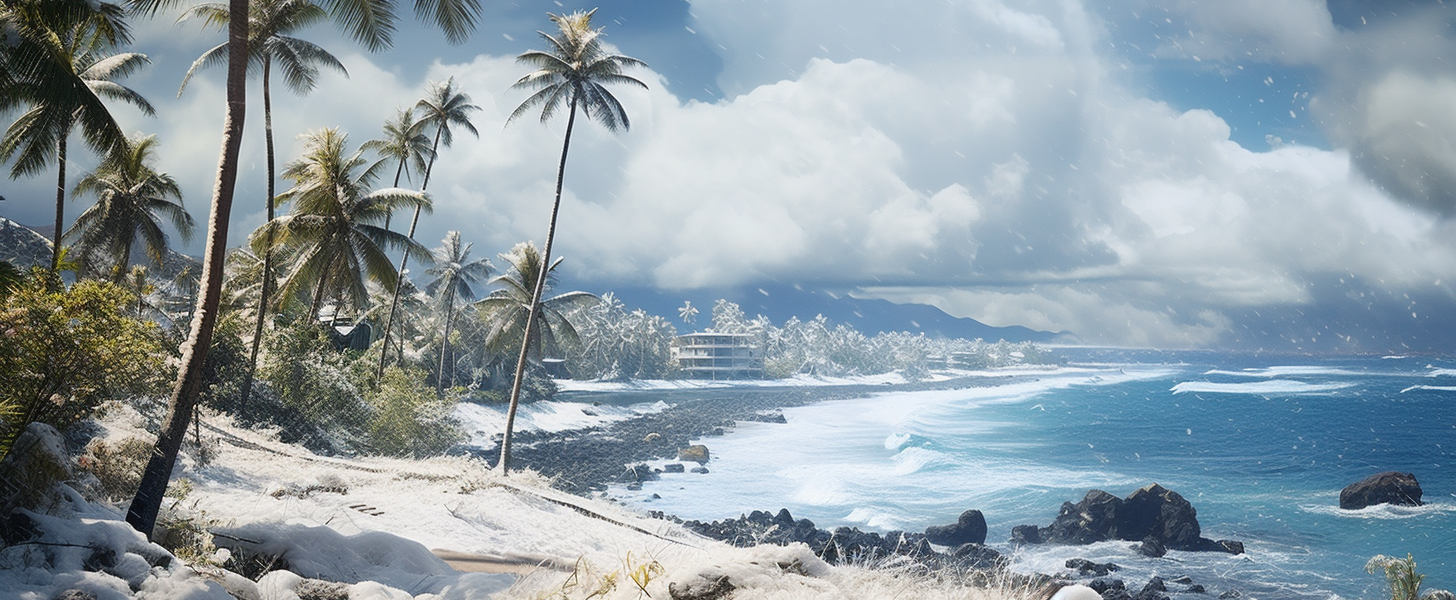While Hawaii is synonymous with warm, sandy beaches and tropical breezes, its highest summits tell a different story—one of nature’s most intriguing paradoxes. The Hawaiian Islands, celebrated for their lush landscapes and idyllic climate, occasionally don a wintry cloak when snow graces the peaks of their tallest mountains.
Mauna Kea and Mauna Loa, the colossal volcanoes on the Big Island of Hawaii, stand tall enough to disrupt the tropical norm. Rising over 13,000 feet above sea level, these geological giants extend into the cooler zones of the atmosphere. It is here, at these lofty altitudes, where temperatures can plummet, allowing for the rare and spectacular occurrence of snowfall in the Pacific paradise.
The phenomenon is not merely a curiosity but a testament to the islands’ diverse climates. The snowfall on Mauna Kea and Mauna Loa is not an everyday event, but it is not unheard of either, particularly during the winter months when the conditions are just right. The sight of snow-capped peaks against the backdrop of Hawaii’s verdant terrain is a striking contrast that captivates both locals and visitors alike.
This occurrence is more than a visual spectacle; it’s a reminder of the islands’ ecological complexity. The snow impacts the local environment and can influence water resources as it melts. For the scientific community, it provides a unique opportunity to study weather patterns and climate change in a tropical setting.
The snow on Hawaii’s mountains is a rare and enchanting event that underscores the islands’ geographic and climatic diversity, offering a glimpse into the dynamic natural forces that shape our world.




